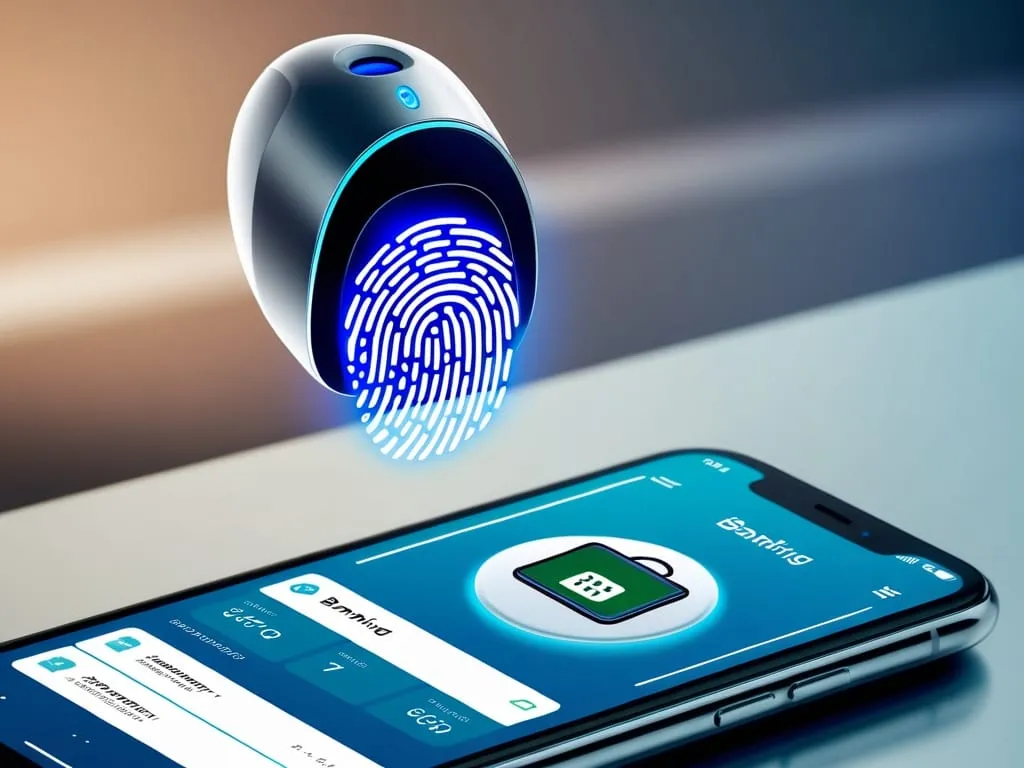In the ever-evolving landscape of financial security, a new era is dawning, one where your face or fingerprint serves as your passport to the financial world. This isn't the realm of science fiction; it's the reality we're living in today, thanks to the rapid advancement of biometric technology.
Imagine Jane, a busy professional, who can now sail through payments and account access with just a glance or a touch. She appreciates the convenience, but like many of us, she also ponders the delicate balance between this ease and the privacy of her personal data. As biometric innovations continue to reshape our notions of security, it's crucial to explore the intimate relationship between consumers and financial institutions that these technologies are fostering.
The Rise of Biometric Authentication
Biometric authentication, which includes methods like fingerprint scanning, facial recognition, and voice authentication, has become a cornerstone in the fight against financial fraud. Just a few years ago, these technologies were at the cutting edge, but today they are an integral part of the standard security suite used by large banks and financial institutions.
For instance, when Jane logs into her banking app, she uses facial recognition, a feature that has become commonplace thanks to the integration of biometric security into modern smartphones and tablets. This method is not only more convenient than traditional passwords but also significantly more secure. Unlike passwords that can be easily forgotten, lost, or stolen, biometric identifiers are unique and hard to replicate, making them a much stronger line of defense against cyber threats.
Multifactor Authentication: The Gold Standard
While biometrics offer a high level of security, they are most effective when combined with other security measures as part of a multifactor authentication (MFA) system. MFA employs several layers of security, combining something the user knows (like a password), something they have (like a mobile device or security token), and something they are (such as a biometric identifier). This layered approach makes it much more challenging for criminals to access a user’s accounts, much like a series of moats around a castle.
Jane's bank, for example, uses MFA that includes a biometric element along with a one-time password sent to her mobile device. This ensures that even if her biometric data is compromised, the additional layer of security prevents unauthorized access.
Enhancing User Experience
One of the most significant benefits of biometric authentication is the seamless user experience it offers. Gone are the days of remembering complex passwords or going through lengthy verification processes. With biometrics, users like Jane can quickly verify their identity without any cumbersome steps, making it easier to access financial services without compromising security.
This balance between convenience and protection is crucial in today’s digital landscape. Consumers are increasingly willing to share personal data as long as it is strictly necessary for their interactions with organizations. Biometric authentication fits perfectly into this scenario, offering faster and more secure processes that reduce friction for users.
Privacy and Data Protection Concerns
While biometrics offer numerous benefits, they also raise significant privacy concerns. Unlike a compromised password, which can be changed, biometric information is permanent and cannot be altered if it is compromised. This makes the handling of biometric data a critical issue for financial institutions.
Banks must handle biometric data responsibly and transparently. This includes using advanced encryption and secure storage solutions to protect this data. For instance, Jane's bank ensures that her biometric data never leaves her personal device, enhancing both security and privacy. This approach helps safeguard biometric systems and maintain user confidence.
Regulatory Compliance
The use of biometric technology is also subject to various regulatory requirements. Laws such as the General Data Protection Regulation (GDPR) and the California Consumer Privacy Act (CCPA) shape how companies implement biometric technologies. These regulations require businesses to handle biometric data with strict oversight, ensuring they collect, store, and process it securely.
Financial institutions must navigate these global regulatory frameworks carefully, obtaining explicit user consent before collecting biometric information and establishing proper data retention policies. This compliance is essential for meeting legal standards and fostering trust among consumers.
Fighting Synthetic Identity Fraud
One of the emerging challenges in financial security is synthetic identity fraud, where fraudsters create entire personas using a mix of real and fabricated information. Biometric technology, particularly behavioral biometrics, is proving to be effective in spotting these synthetic identities.
For example, behavioral biometrics can analyze how a user types information, their keyboard shortcuts, and other behavioral patterns to detect anomalies. This can be supplemented with non-biometric factors like location histories and spending habits to trigger alerts for unusual transactions. Such enhanced systems help banks and fintech companies stay ahead of sophisticated fraudsters.
The Future of Biometric Security
As we move forward, biometric technology is expected to play an increasingly prominent role in identity and authentication within the financial sector. Driven by technological advancements, evolving customer expectations, and regulatory requirements, biometric authentication will continue to provide enhanced security without sacrificing user experience.
For instance, the European Union is examining how biometrics can be used to verify and authenticate users of the EU Digital Identity Wallet, where the digital euro will likely be stored. This expansion of verification systems can offer additional safeguards beyond the banking sector, confirming a user’s identity in various contexts such as sharing medical data, taking online exams, or making age-restricted purchases.
Building Trust
The success of biometric technology in finance hinges on building trust between consumers and financial institutions. This trust is built on transparency and responsible data handling. When Jane knows that her bank is handling her biometric data securely and transparently, she is more likely to adopt these technologies.
Banks face a crucial task in earning this trust. Unlike traditional passwords, biometric information is permanent, making it imperative for banks to have robust security measures in place. This includes advanced encryption, secure storage solutions, and fallback mechanisms like PINs in case biometrics fail.
Expanding Financial Inclusion
Biometric technology also has the potential to expand financial inclusion by providing more secure and seamless customer experiences. For groups with cognitive and learning disabilities, biometrics can improve accessibility by eliminating the need to recall complex sequences or credentials.
In the UK, for example, one-quarter of adults would exit the account opening process if the identity checks were too time-consuming or complex. Biometric authentication simplifies these processes, reducing abandonment rates and making financial services more accessible to a broader audience.
Conclusion
As biometric technology continues to seep into the fabric of our financial lives, it's clear that it's not just about convenience or security; it's about trust. The relationship between consumers and financial institutions is being redefined by these technologies, challenging traditional notions of how we secure, access, and manage our wealth.
For Jane and millions like her, the future of financial security is one where biometrics are not just an added layer of security but a fundamental part of how we interact with our financial world. It's a future where convenience and security are not mutually exclusive but intertwined, creating a new trust paradigm that is both robust and user-friendly. As we navigate this new landscape, it's essential to address the potential pitfalls while embracing the vast potential that biometric technology offers.






